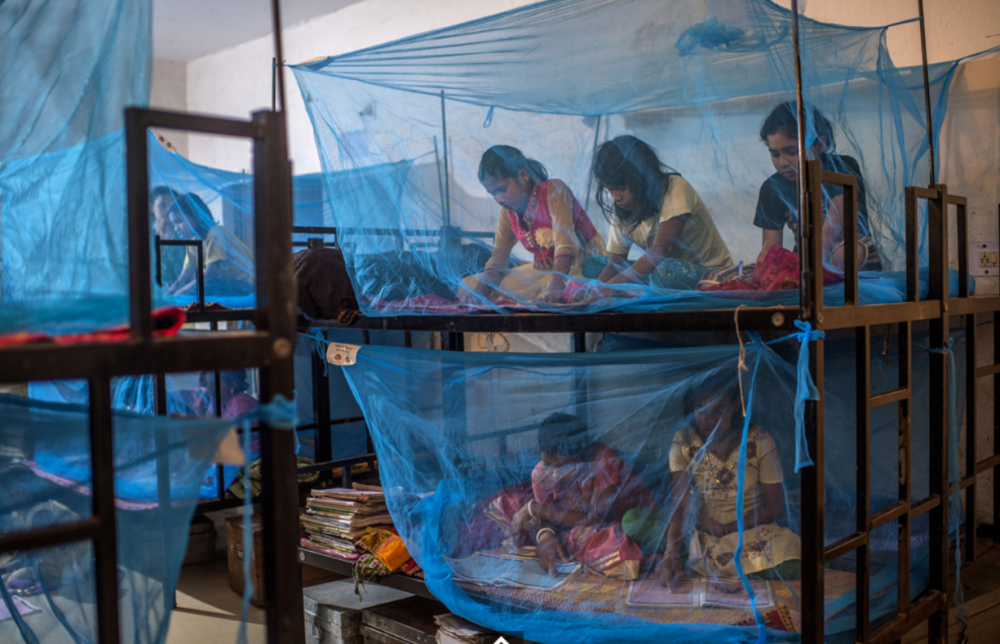WHO’s ‘World Malaria Report’ warns that global progress in eliminating the disease is stalling

The World Health Organisation’s ‘World Malaria Report 2018’ has warned that progress in tackling malaria is stalling, with no significant improvement between 2015 and 2017.
Targets set by WHO aim to achieve a 40% reduction in malaria cases and deaths by 2020.
In 2017, there were an estimated 219 million cases of malaria in 2017 with 435,000 deaths. This is an increase from the 217 million reported in 2016, and 214 reported cases in 2015.
Approximately 70% of all malaria cases and deaths in 2017 occurred in just 10 African countries (Burkina Faso, Cameroon, Democratic Republic of the Congo, Ghana, Mali, Mozambique, Niger, Nigeria, Uganda and Tanzania) and India. In 2017 these African countries reported 3.5 million more cases of malaria than 2016.
In response to the report, WHO and its partners are launching a new country-led response to scale up prevention and treatment, increase investment and protect at risk people.
Dr Tedros Adhanom Ghebreyesus, WHO Director-General, commented:
“Nobody should die from malaria. But the world faces a new reality: as progress stagnates, we are at risk of squandering years of toil, investment and success in reducing the number of people suffering from the disease”
“We recognise we have to do something different – now. So today we are launching a country-focused and -led plan to take comprehensive action against malaria by making our work more effective where it counts most – at local level.”
WHO’s report highlighted that despite increases in recent years in the distribution and use of bed nets there are major gaps in preventing the spread of the disease. In 2017, 50% of at risk people in Africa did not sleep under an insecticide-treated bed net.
The response plan ‘High burden to high impact’ will support countries with the highest number of reported cases and deaths and is based on four key pillars:
- Increasing national and global political attention to malaria deaths
- Using strategic information to drive impact
- Establishing guidance, policies and strategies suitable for all countries
- Creating a coordinated country response
The plan is based on the principle that no one should die from a preventable and curable disease that is easily diagnosed.
Dr Kesete Admasu, CEO of the RBM Partnership added:
“There is no standing still with malaria. The latest World malaria report shows that further progress is not inevitable and that business as usual is no longer an option”
“The new country-led response will jumpstart aggressive new malaria control efforts in the highest burden countries and will be crucial to get back on track with fighting one of the most pressing health challenges we face”
However, the report did highlight progress with many countries nearing elimination. In 2010, 37 countries were nearing elimination, today 46 countries are nearing elimination.
In China and El Salvador, where Malaria was once an endemic problem, no transmission of malaria was reported in 2017. India also recorded a 24% reduction in malaria cases between 2016 and 2017.
Similarly, in 2018 Paraguay was certified as malaria free.
Dr Matshidiso Moeti, WHO Regional Director for Africa, noted:
“When countries prioritize action on malaria, we see the results in lives saved and cases reduced”
It is estimated that to meet the 2030 targets of the global malaria strategy, malaria investment needs to reach US$6.6 billion by 2020, double the current available amount.
The AIDF Global Summit will return to Washington D.C in September 2019.
Join us for the AIDF Africa Summit on 26-27 February 2019 in Nairobi, Kenya to discuss the challenges and opportunities of eliminating malaria in Africa.
If you’d like to stay informed on the latest updates in aid and development, please sign up for the AIDF newsletter.
Image credit: WHO















